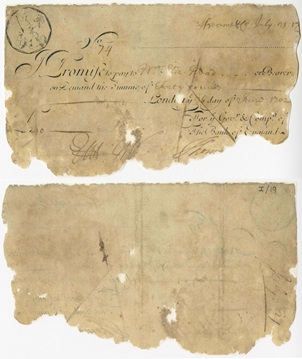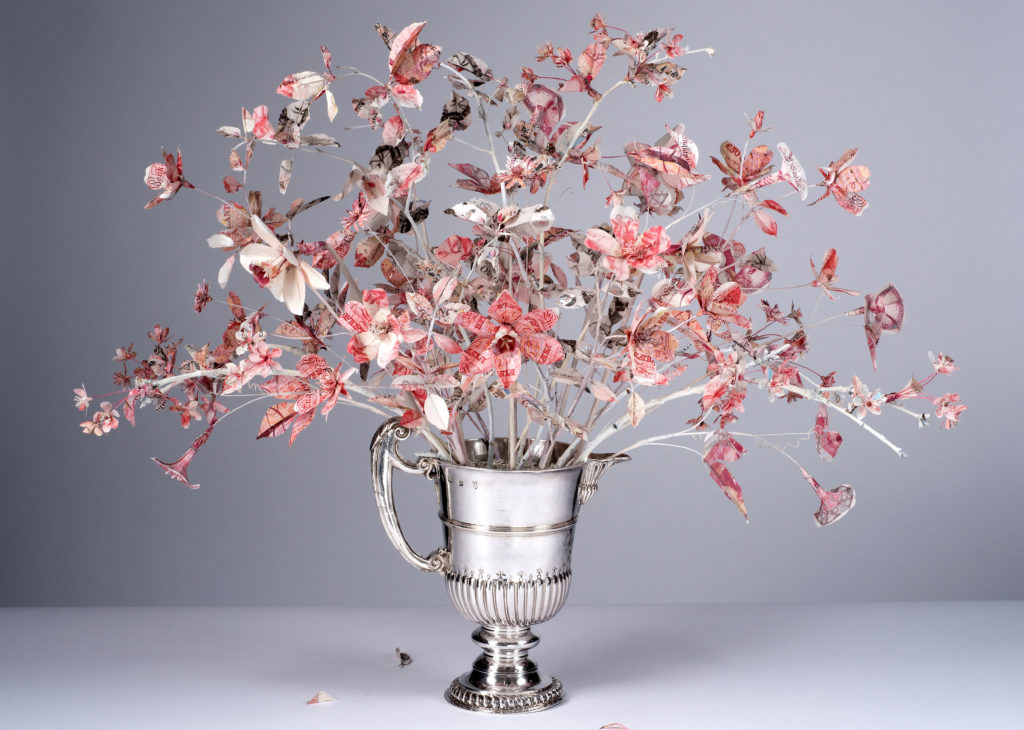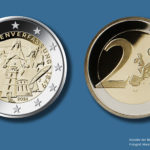
Numismatic exhibition in UK: 325th anniversary of Bank of England
- August 13, 2019
- by
- Pierre
Bank of England presents some historical and founding items from its collections to commemorate its 325th anniversary, 325 objects from its 325 year history.
From Roman relics to a nuclear fall-out calculator from the Cold War, the exhibition features a variety of fascinating artefacts to celebrate the event.
The objects explore how money and the way we pay for things has transformed since the Bank of England was established in 1694. Many of these items are in relation, directly or not, with numismatics.
You’ll learn more about BoE’s work and find out how it’s changed over the past 325 years.
NUMISMAG took this opportunity to ask a few questions to Jennifer ADAM, BoE Museum curator, about the exhibition and BoE, more generally.
NUMISMAG: what are the main themes of the exhibition?
JENNIFER ADAM (BoE Museum curator): The exhibition celebrates the Bank’s 325th anniversary. It highlights key developments in the Bank’s role and remit, but the main focus is on the place and people rather than the technical work of the Bank. As we developed the exhibition we had three main themes in mind: changing forms of payment, gold at the Bank, and the ‘domestic’ side of work at the bank (social history, rather than policy/technical work). But with so many objects, other themes emerge along the way. We were keen to highlight the role of women at the Bank (both as customers and staff), changing technologies and ways of working, some context from world events and social change. We also wanted to include some representations of disabilities (some quite unexpected).
NUMISMAG: What are the topics concerning numismatics in particular that are covered by this exhibition?
JENNIFER ADAM (BoE Museum curator): The main topics are Coins and tokens of the Bank Restriction period, Banknote history. Throughout the exhibition we represent the coronation years of British monarchs using some of the most visually striking coins we have for each one – including several gold £5 coins. We also displayfor this occasion items used for handling payment, a 1749 coin balance, a 1916 cash register, a 1896 coin sorter to a modern cashless payment machine (showing the transition of forms of payment from weighty metal, to paper, to digital form).
NUMISMAG: What is the story of the first banknote issued by the BoE that you display to the public?
JENNIFER ADAM (BoE Museum curator): The earliest note we have on display (and one of the earliest in our collection) is a 1697 note for £40 issued to Elizabeth Head. It’s another way of showing that many of the Bank’s earliest customers were women.
Plus, this note is the equivalent of more than £9000 in today’s money – it’s no inconsequential amount, and a sizable deposit in the Bank.
NUMISMAG: Do you present counterfeit banknotes made by the Nazis during the Second World War?
JENNIFER ADAM (BoE Musuem curator): Yes, we have two on display in the section that covers 1915-1951.
NUMISMAG: How many objects are in the BoE’s numismatic collections?
JENNIFERADAM (BoE Museum curator): Our historical collections include coins, medals and banknotes, artworks, furniture, silver and social history collections. We have around 15,000 banknotes and 4,500 coins, and a small collection of medals (c.230).
NUMISMAG: What is the next numismatic exhibition planned by the BoE?
JENNI ADAM (BoE Museum curator): We will be making some updates to our existing banknote gallery later this autumn. But our exhibitions are not purely numismatic. To celebrate the unveiling of the new £20 this autumn, featuring the artist JMW Turner, we will have a display about Turner as a businessman, and his investments at the Bank. We will also be publishing more of our collections online.

Jennifer ADAM, curator of BoE Museum
The oldest BoE banknote
One of the exposed items is the very first banknote issues by BoE.

BoE very first banknote of £40 – 1697
The Bank of England issued banknotes to people who deposited money at the Bank of England. This one is addressed to Elizabeth Head, who had deposited £40. That’s the equivalent of around £9,200 today.
Early banknotes could be exchanged like money but their value was too high to be an everyday kind of currency.
A London and Westminster token penny
In the 1790s there was a shortage of official coinage because prices had risen. Many local businesses produced token coins to meet demand for small change.

Westminster Token-penny
A token penny like this would have had a value of around 50p today. Some had the names of the company, or celebrated a local landmark, like this one. Others were adverts, or carried political messages.
Banknote forgery, stamped forged,
then presented again for payment
This banknote forgery was presented to the Bank of England to be exchanged for coins in 1858. Bank clerks recognised it as a forgery, stamped it with a ‘FORGED’, and returned it to its owner (as was the custom at the time).

£10 forged banknote
Bank staff finally confiscated it in 1895, after someone had erased the ‘FORGED’ marking and tried to exchange it again.
Exhibition details
Museum adress:
BoE Museum – Bartholomew Lane, London, EC2R 8AH
22 July 2019 – 29 May 2020
Free admission
Monday-Friday 10am to 5pm (excluding Bank Holidays)
last entry at 4:30pm.


£50 banknote’s flower
Sources: BoE and NUMISMAG.

















